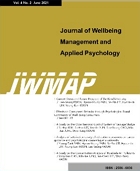- 권한신청
- E-ISSN2586-6036
- KCI
Physical Recovery through Health Management Education for the Disabled or the Elderly
CHOI, Eun-Mee (Dep. of Health Care Management, Catholic Kwandong University)
KWON, Lee-Seung (Dep. of Health Care Management, Catholic Kwandong University)
Abstract
Purpose: The number of people with disabilities and the elderly over 65 years of age is gradually increasing due to physical disabilities and social aging. Their typical physical disorders or chronic diseases include low back pain, sciatic pain, arthritis, and musculoskeletal systems such as discs. The average prevalence of disease is 78%. These are various physical obstacles and hindrances in daily life. Research design, data and methodology: From August 6, 2019 to September 24, 2019, the Senior Welfare Center in Gyeyang-gu, Incheon, operated a healthy body exercise and health education program for living health management. Results: The vascular health index using U-Bio pulse wave was relatively good at the first average of +7.4, but the second average of -6.3. This can be seen as a result of the combination of diet and lifestyle education along with the effect of corrective exercise. As a result of body shape measurement analysis, the number of persons requiring management with 3 or more body imbalances was found to be from 75% before to 62.5% afterwards. Conclusions: Exercise effect appears when exercise lasts for at least 10 weeks. Some performances were good, but there were limitations due to the operation of a short training period.
- keywords
- Disabled and elderly disability, Physically disabled, Health education, Health program, Physical recovery
- 다운로드 수
- 조회수
- 0KCI 피인용수
- 0WOS 피인용수














